Link’s (many) Adventures
The Legend of Zelda series has been going on for what seems like forever. However, the series just marked its 37th anniversary in February of 2023! With so many games released on all Nintendo Platforms, it’s hard to keep track of them all. However, we’ve got your back.
Here’s every mainline Zelda game in order of release! (Sorry Link’s Crossbow Training, and Zelda CDI)

The Legend of Zelda (NES)
Released: February 19, 1994 (Famicom)
The game that started it all. This classic 8-bit adventure saw Link roaming Hyrule and completing dungeons in order to defeat Ganon and save Zelda. While other titles have since usurped the original, it cannot be understated how much of an impact this game had on the adventure genre.
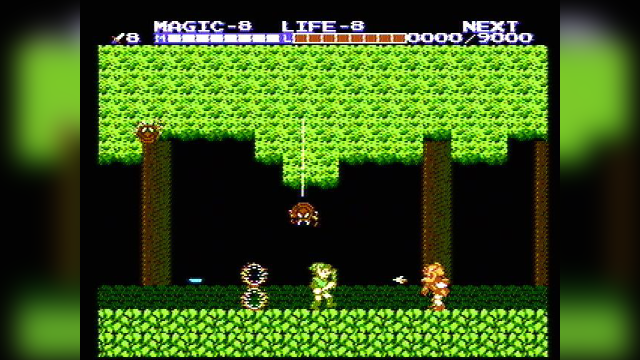
Zelda II: The Adventure of Link
Released: January 14, 1987 (Famicom Disk System)
The second entry in the Zelda series turned from overhead dungeon exploration to a 2D side scroller. Gone were the rupees of the first game, replaced with XP. Link could use magic, and his shield was a focal point to combat in the game. While considered the black sheep of the franchise by some, it is the first time players were introduced to the mysterious “Dark Link”.

The Legend of Zelda: A Link to the Past
Released: November 21, 1991 (Super Famicom)
A Link to the Past is where the series really started hitting its stride. Returning to the top-down look of the first game, and a more concrete story for players to follow along with. With the “Dual World” feature letting Link travel between the Light World and the Dark World, players had double the dungeons to explore and double the puzzles to solve, making this title a certifiable classic.

The Legend of Zelda: Link’s Awakening
Released: June 6, 1993 (Game Boy)
DX Version: December 1st, 1998 (Game Boy Color)
Link’s first adventure on handheld consoles. After being shipwrecked on the Isle of Kohonit, Link must awaken the Wind Fish if he ever wants to return home. The first game to take place outside of Hyrule, as well as a full-sized adventure on a handheld device. Link’s Awakening DX was released a few years after for the Game Boy Color, allowing players to take on a special dungeon called the Color Dungeon, which wasn’t available in the original game.

The Legend of Zelda: Ocarina of Time
Released: November 21, 1998 (Nintendo 64)
Ocarina of Time marks the first game in the series to be brought into 3D. The title introduced Z-Targeting with Navi, as well as hints on what to do next thanks to her. Players were able to take on a whole new story and were introduced to the first human incarnation of Ganon, Ganondorf.
The game started out with Link as a child, only to find out when they pulled the Master Sword out from its pedestal in the Temple of Time, that they were transported into the future, where Link is an adult, and the kingdom of Hyrule has fallen to ruin. Players had to make their way between time periods to solve puzzles and defeat bosses. It was the most ambitious title so far.
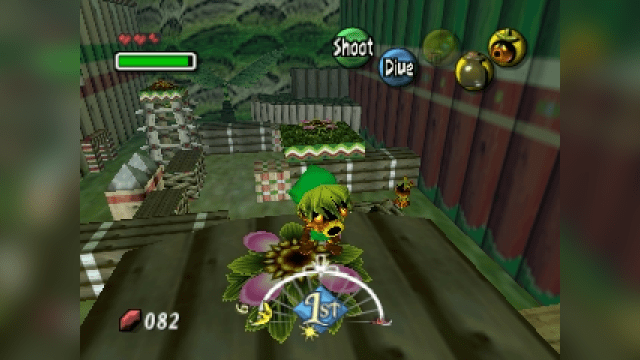
The Legend of Zelda: Majora’s Mask
Released: April 27, 2000 (Nintendo 64)
The direct sequel to Ocarina of Time. After being given his Childhood back, Link travels through the lost woods, looking for Navi. During his search, Link encounters the Skull Kid, who transports him to an alternate world.
With three days until the Moon collides into the Earth, link must work his way through Termina, and find a way to prevent the apocalypse and his own demise. The title borrowed assets from Ocarina of Time, but its story, and world were impactful enough to burn the Moon’s snarl into the minds of players for years to come.
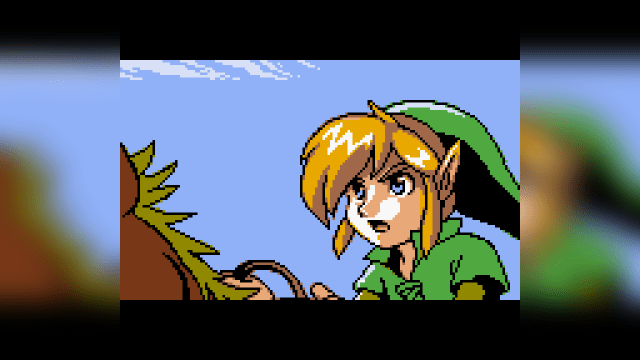
The Legend of Zelda: Oracle of Ages/Seasons
Released: February 27, 2001 (Game Boy Color)
The first mainline game not developed by Nintendo, the publisher called upon Capcom to produce Link’s second handheld adventure. Oracle of Ages and Oracle of Seasons launched on the same day and, while they are two different titles, they’re both connected. It didn’t matter which one you played first as if you finished one title, you would be given a passcode to use at the start of the second one.
Using this passcode, you were able to continue the adventure in the new title, right from where you left off. This crossplay option also allowed you to obtain a secret ending that allowed you to beat Ganon on either version.

The Legend of Zelda: Four Swords
Released: December 2, 2002 (Gameboy Advance)
Packaged in with the re-release of Link to the Past on Gameboy Advance, players got an adventure called Four Swords. It told the story of a magic sword that split Link into four identical copies, allowing four players to take on Hyrule and the new villain Vaati, together.
The title was a co-op/competitive title with an arcade-like gameplay loop, with multiple stages rather than one continuous open world, as in previous installments. The game was subsequently re-released on DSiWare to celebrate Zelda‘s 25th anniversary in 2011. This version included new stages based on previous titles. Unfortunately, it was delisted one year later, only resurfacing on the 3DS e-shop for a single month in January 2014.

The Legend of Zelda: The Wind Waker
Released: December 13, 2002 (GameCube)
The GameCube’s first 3D Zelda title. At first, players were astonished to see that the art direction for the Wind Waker was taken in a cel-shaded direction. While this cartoony style didn’t sit right with players at first, the improvements to the 3D formula, like being able to parry attacks, as well as its sailing mechanics, allowed Link to seamlessly transition from sailing the seas to docking at an island. Furthermore, its story didn’t shy away from a classic, dramatic tale, despite its cartoony appearance.
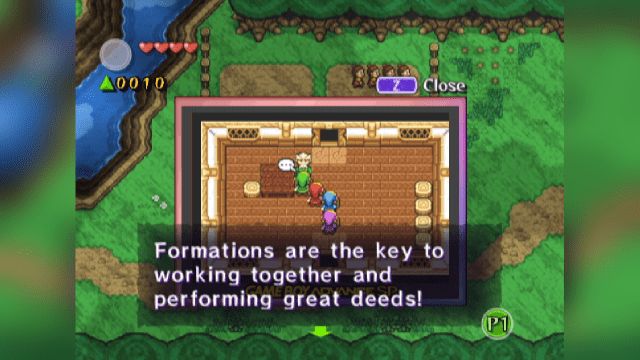
The Legend of Zelda: Four Swords Adventures
Released: March 18, 2004 (GameCube)
The second entry in the Four Swords series, and the first 2D Zelda on the GameCube. Borrowing its looks from Wind Waker, four players can link up their Gameboy Advance and play through this adventure cooperatively. The title follows a similar structure to the original Four Swords game, with each stage being separated into levels like an arcade title. However, this linear style allows for easy pick-up and play, which is paramount for a multiplayer game.

The Legend of Zelda: The Minish Cap
Released: November 4, 2004 (Gameboy Advance)
The first original Zelda adventure to be brought to the GBA. While Four Swords was the first, The Minish Cap is a formal adventure in the style of Link to the Past and other 2D Zelda titles. This is the first and only time the Picori (or Minish) are introduced into the series. Link and the player will be traveling between the world of the Picori, and Hyrule as they take down Vaati once more, as they need to restore power to the four swords.

The Legend of Zelda: Twilight Princess
Released: November 19, 2006 (Nintendo Wii)
December 11th, 2006 (GameCube NA)
The first game in the series to be released on both a new and previous generation of consoles, Twilight Princess launched on Nintendo Wii but also released on the GameCube, due to Nintendo promising a new mainline game for the console. While similar in scope to the Wind Waker, the more mature art style, as well as its darkened colors make for a version of the game that is a stylistic about-turn compared to Wind Waker. Twilight Princess is also the introduction of Wolf Link, and the player’s companion, Midna.
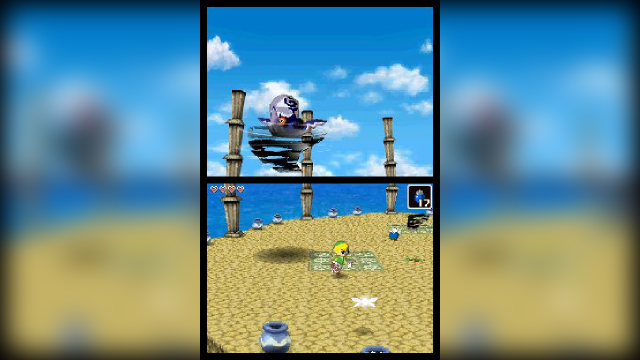
The Legend of Zelda: The Phantom Hourglass
Released: June 23, 2007 (Nintendo DS)
With the release of the Nintendo DS. 2D Zelda was changed. While retaining the art style of The Wind Waker, players used the DS Touch Screen as their main control method, following Link on his journey through Being a sequel to The Wind Waker, Link, Tetra, and the other pirates are separated, as Link wakes up on an island he’s never been to.
Working with Ceila the Fairy, Link needs to uncover the mystery of the island and find Tetra.

The Legend of Zelda: Spirit Tracks
Released: December 7, 2009 (Nintendo DS)
A direct sequel to The Phantom Hourglass, Link is now bound to a train when crossing the overworld. Players will upgrade the train over time adding cannons and other means of defending themselves. Link is also accompanied by Zelda, whose spirit and body have been separated. Only able to be seen by Link, the two much recover Zelda’s body and stop the villain Malladus.

The Legend of Zelda: Skyward Sword
Released: November 18, 2011 (Nintendo Wii)
This iteration of 3D Zelda sees the introduction of the Nintendo Wii’s motion controls, while Twilight Princess didn’t include the Wii’s Motion Controls, Skyward Sword took full advantage of the Wii Motion Plus to ensure that the player’s inputs would be precise. This also marks the beginning of The Legend of Zelda timeline.

The Legend of Zelda: A Link Between Worlds
Released: November 22, 2013 (Nintendo 3DS)
The first full Zelda adventure made for the 3DS. Using a Link to the Past as the main inspiration for the game, players will be thrust back into a top-down Hyrule as the antagonist Yuga turns Link into a painting. Luckily for both Link and the player, this gives Link the ability to swap between both painting and physical forms. Thus, opening the door for more movement opportunities and exploration. A Link Between Worlds also brings back the Dark World, called Lorule, as well as a mysterious character named Ravio.
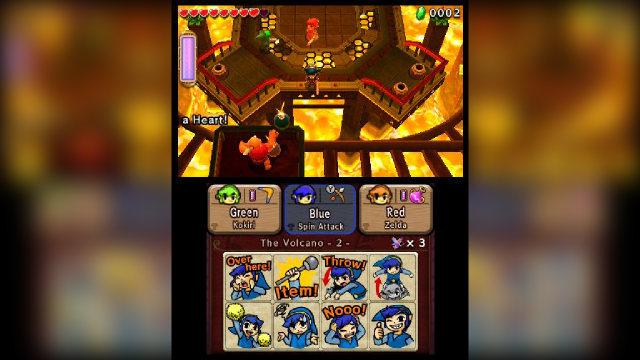
The Legend of Zelda: Triforce Heroes
Released: October 23, 2015 (Nintendo 3DS)
In this, the third multiplayer game in the series, Players will be sent to the distant Kingdom of Hytopia to rescue its princess. Borrowing concepts from Four Swords, and Four Swords Adventures, players will have to complete pick-up and play levels co-operatively to overcome this adventure. The game plays similarly to A Link Between Worlds, although players can customize their Link, which will give them new abilities during gameplay.

The Legend of Zelda: Breath of the Wild
Released: March 3, 2017 (Nintendo Wii U & Nintendo Switch)
One of the most popular games in the entire franchise, Breath of the Wild turns the Kingdom of Hyrule into an open-world adventure. Link, after waking up from a 100-year slumber, must travel to Hyrule castle to defeat the scourge known as the Calamity. However, while players could run to the final boss from starting the game, it’s advised against. It’s encouraged to scale mountains, cook food, defeat the four Divine Beasts, and Recover the Master Sword, to give Link a fighting chance.

The Legend of Zelda: Tears of the Kingdom
Released: May 12, 2023 (Nintendo Switch)
A direct sequel to Breath of the Wild, players will once again take control of Link in this sandbox open world of Hyrule in Tears of the Kingdom. Though, the world has been further expanded, thanks to the addition of the mile-high Sky Islands, and murky sub-terrain of The Depths, the world has tripled in size.
Link’s abilities have also been expanded as well, with the addition of Zonai items, the Acsend ability, allowing him to swim up through ceilings, and the iconic Ultrahand, which gives him the power to attach items together to form new contraptions, forming the backbone of the entire game and its puzzles.


